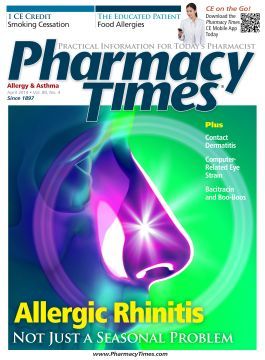Publication
Article
Pharmacy Times
Electronic Personal Health Records: A Tech Response to Readmission Woes
Author(s):
As health care providers work to reduce hospital readmissions, pharmacists and technology may provide a solution.
As health care providers work to reduce hospital readmissions, pharmacists and technology may provide a solution. As clinicians focus on preventing hospital readmissions and improving patient outcomes, a marriage of technology and pharmacists’ care could create a path for care collaboration and patient involvement.
Camille Charbonneau, PharmD, and Stephen Jon Kogut, PharmD, of the College of Pharmacy at the University of Rhode Island, see the future of many medical interventions, as well as collaboration between medical team members, relying on electronic health records (EHRs), personal health records (PHRs), and electronic personal health records (ePHRs).
“An EHR is a great way to marry the medications and the disease states, and how they all play together,” Dr. Kogut said in an interview with Pharmacy Times. “It provides the gold standard of medications that the patient should be taking.”
Drs. Charbonneau and Kogut explored the use of EHRs, PHRs, and ePHRs after hospital discharge in a study published in the January 17, 2014, edition of Drug, Healthcare and Patient Safety.
“The hope is to meet them at the sweet spot,” Dr. Charbonneau said in an interview with Pharmacy Times. “We met with them between discharge and their first visit with their primary care provider.”
The technology is particularly poised to become a pharmacist’s forte because it meshes well with the pharmacist’s existing practice, Dr. Charbonneau noted. In their study, the pharmacists introduced ePHRs during home visits in which they also reconciled the patients’ medication lists.
The home visits included a tutorial on the ePHR program (ER-Card) and, in some cases, a tutorial on various computer hardware aspects, such as accessing a flash drive.
“The dialogue just grows based on how you approach it,” Dr. Charbonneau stated. “But it’s not just, here, let me plug in my laptop and just go. You ease into it. For some, the technology can be daunting, so you don’t want to dissuade them.”
ER-Card offers a help platform as well, which participants could call if they had trouble with the program, the researchers noted. Participants who did not want to adopt the ePHRs received a printed copy of their medical record, they added.
Pharmacists detected a higher percentage of medication-related problems among participants using the ePHR system than among participants who did not use the system, the study notes.
Although the study involved just 20 participants who agreed to use an ePHR—59 participants expressed interest when approached at the hospital, but researchers were unable to schedule home visits with 29 of them, and 10 participants did not adopt the records—a larger application of the researchers’ model would allow stronger conclusions about medication management and ePHRs, the study noted. In addition, the model did not include (1) interventions with participants’ community pharmacies or (2) contact with the prescribers, both of which offer additional avenues to explore. The technology could become particularly relevant as pharmacists, health systems, and other health care providers enter accountable care organizations (ACOs).
“If pharmacy is going to participate in an ACO-based care model, part of that value is going to be preventing readmissions,” Dr. Kogut said.
Drs. Kogut and Charbonneau see the records becoming an integral part of patient involvement, as well as something that will enter community pharmacy practice.
“This enables pharmacists to say, here is the list we have, but you should reconcile this with your own list,” Dr. Kogut said. “I think the community pharmacists can encourage patients to reconcile that list with their doctors’ list, and with the list from the hospital.”







